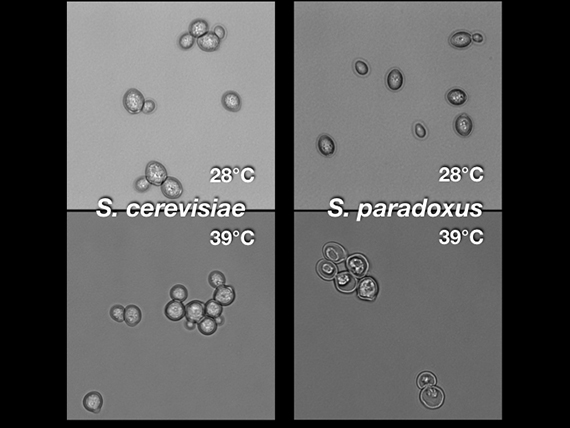At high temperature, S. paradoxus cells die in the act of cell division, as seen by the dyads with cell bodies shriveled away – highlighted by arrows – from the outer cell wall. (Images by Carly Weiss, courtesy of the Brem Lab)
There are more than 1,000 species of yeasts and they vary in terms of genetics, metabolism and biochemistry. Their capabilities can be harnessed for a wide range of biotechnological applications, including biofuel production. Efforts such as the 1000 Fungal Genomics Project led by the JGI aim to improve our understanding of fungal diversity by sequencing genomes from across the fungal Tree of Life, but they also highlight the corresponding need to be able to assign functions to unknown genes and improve functional annotation to harness the genomic data.
In Nature Genetics, a team led by researchers at the University of California, Berkeley and the Buck Institute for Research on Aging and including JGI researchers has demonstrated a way to map associations between genotype and phenotype using a strategy called reciprocal hemizygosity analysis via sequencing (RH-Seq). The proof-of-concept study represents a first-ever case of complex genotype-to-phenotype mapping between species that have been separated for millions of years and paves the way for dissection of additional traits, in fungi and beyond. Learn more on the JGI website.




